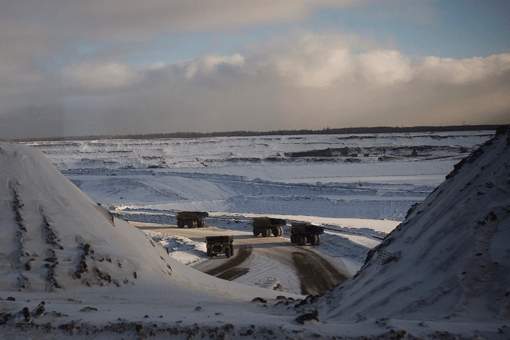Oil sands interest grows
Over the last decade, more and more institutional investors have entered the oil sands market, which has enjoyed stable growth thanks to recent technological advances

Between 2007 and 2009, RBS was involved in underwriting the largest volume of loans to companies active in tar sands extraction. A total of some $7.5bn changed hands in the process.
Since it was initially recapitalised in 2008, the bank has underwritten a further $2.5bn of corporate equity and debt to companies in the tar sands industry. During the same period, Barclays Bank was the leader in corporate equity and debt to companies involved in the tar sands industry with an amount exceeding $14bn.
The impact of tar sands exploration on the climate, indigenous rights and the environment in general has been highlighted in several publications, such as The Cooperative Bank and Dirty Oil – How the tar sands are fuelling the global climate crisis, by Greenpeace Canada and the WWF’s, Unconventional Oil – Scraping the bottom of the barrel?
FirstPensions claims that many extraction companies are not telling investors the whole story about the true long-term cost of tar sands extraction. In 2010, the organisation was instrumental in mobilising institutional investors to vote for shareholder resolutions that called on Shell and BP to publish full details of the underlying assumptions they had made regarding important environmental, financial and social risks when they decided to go ahead with tar sands projects.
Extracting oil from sand is a process that requires huge upfront investment in expertise and technology. Giant shovels, each one able to scoop nearly 100 tonnes of sand at a time, are used in the process. More than two tonnes of oil sands need to be extracted to produce a single barrel of usable crude oil.
A large volume of water is also needed in the process, since the ore has to be mixed with warm water to form a slurry. This slurry is then passed through a processing unit, which separates the bitumen from the sand/water mixture. The bitumen then has to be further diluted, using a special solvent, before it can be transferred through a pipeline to an upgrading facility.
In Alberta, Canada, oil sands have been in operation since the 1960s, but the speed of development has accelerated in recent years, particularly in the Athabasca region. This has started to attract the attention of institutional investors.
The Asians were among the first to become involved and the Korea Investment Corporation (KIC) has investment substantial amounts in companies such as Osum Oil Sands Corporation. In February Petrochina formed a joint venture with Athabasca Oil Sands and raised nearly $2bn of capital in an initial public offering.
However, the biggest investors, at present, are based in North America. After them, the largest concentration of tar sands investors, many of them institutional, are located in London. HSBC, Barclays and Royal Bank of Scotland are all heavily invested in tar sands extraction.













